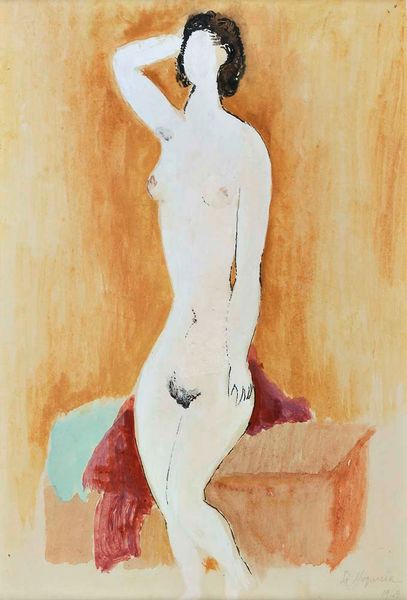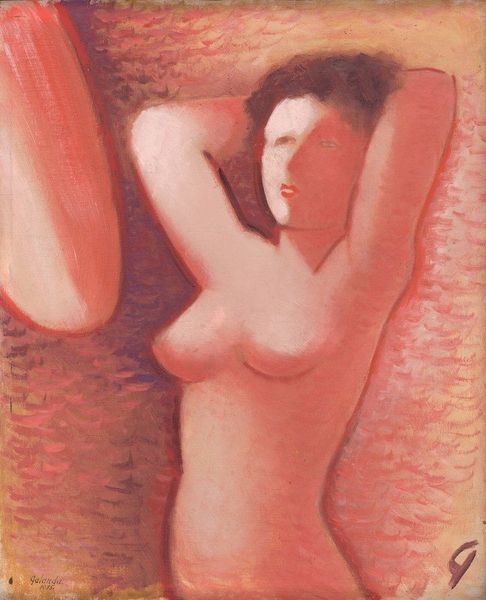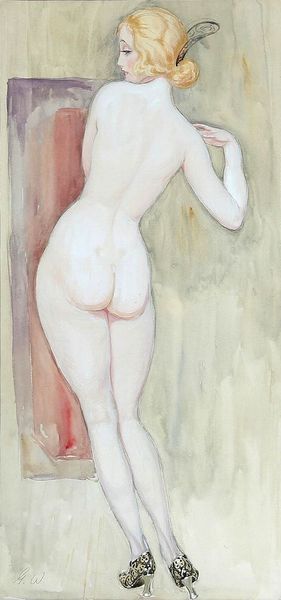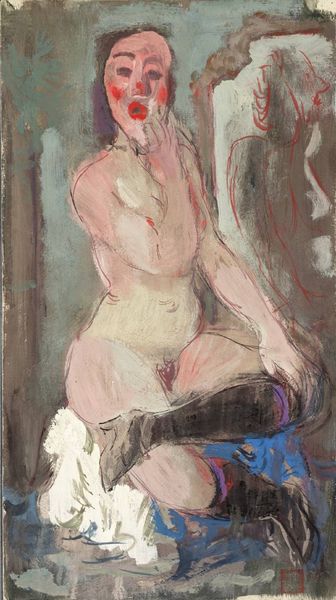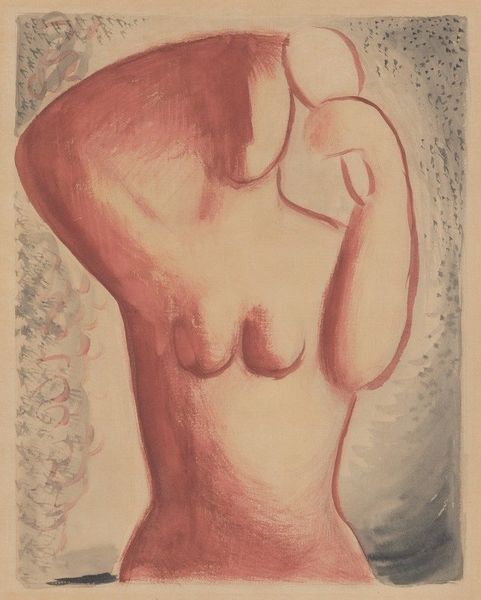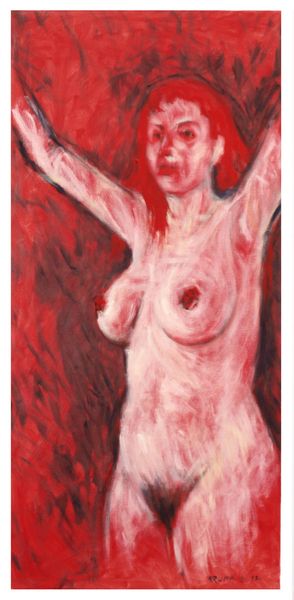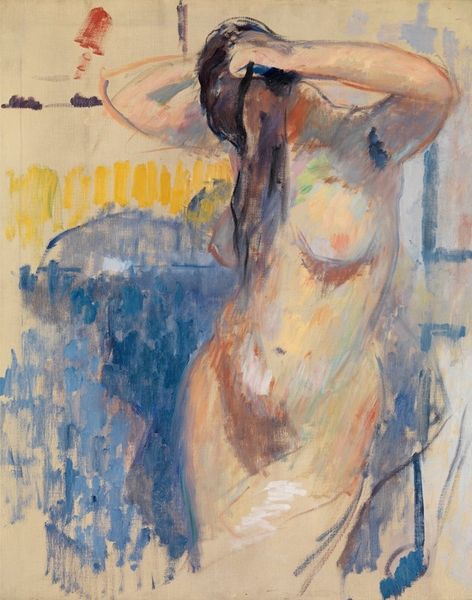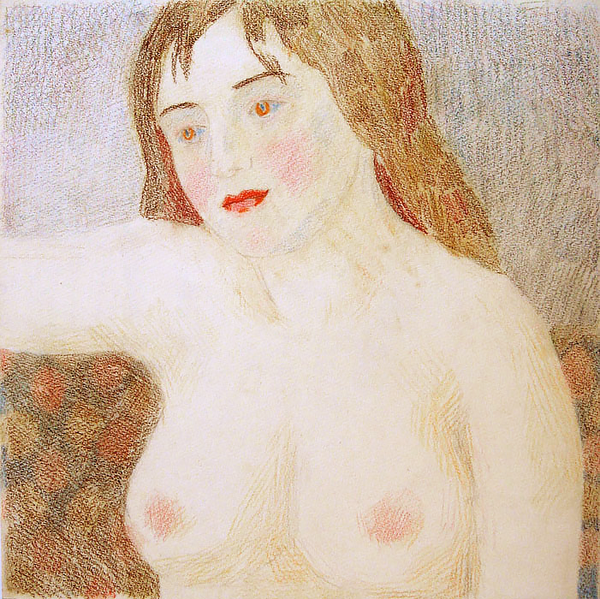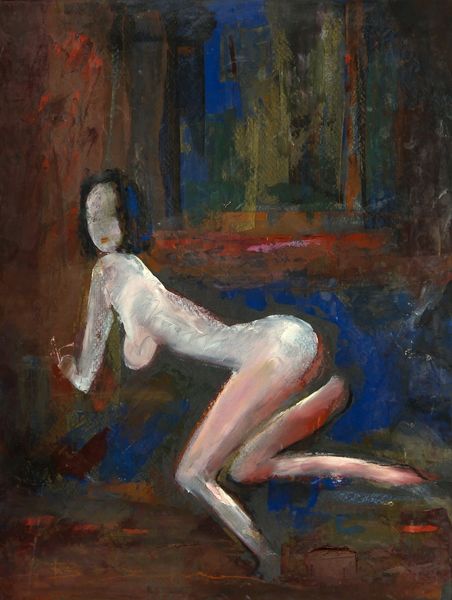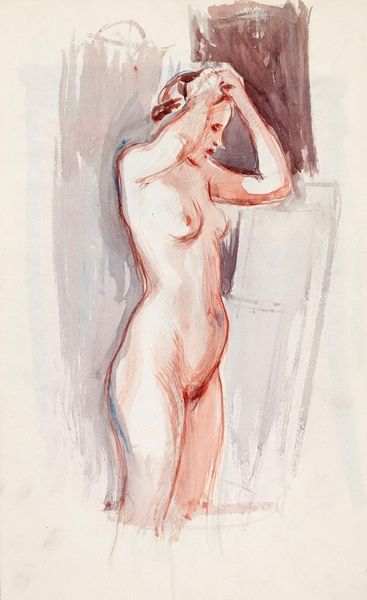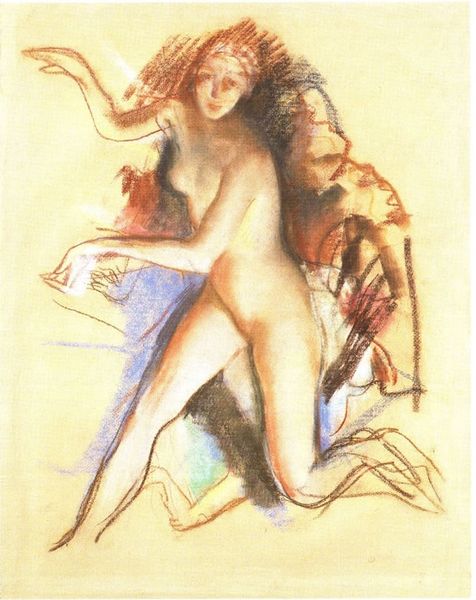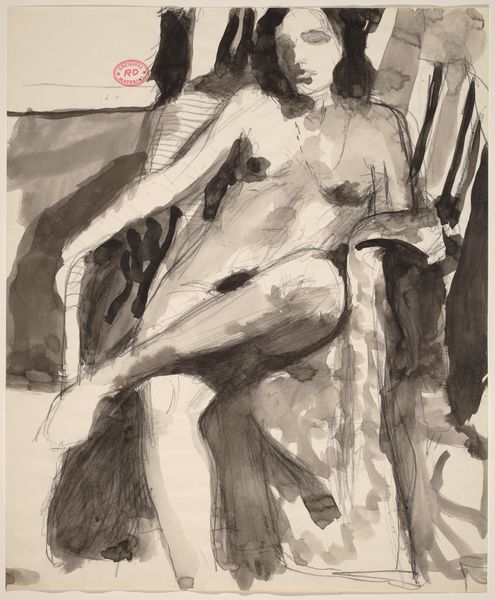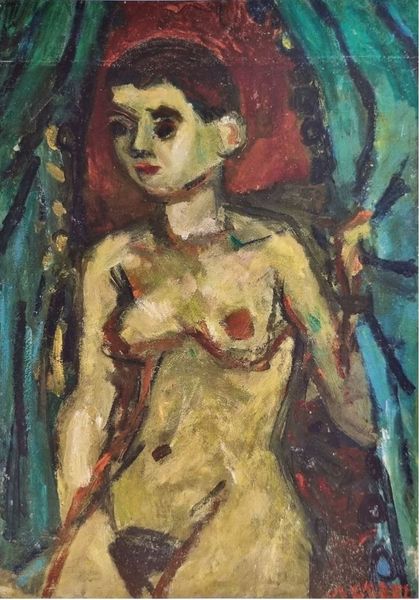
drawing, painting, paper, dry-media
#
portrait
#
drawing
#
painting
#
paper
#
dry-media
#
nude
Dimensions: sheet: 31.12 × 22.86 cm (12 1/4 × 9 in.)
Copyright: National Gallery of Art: CC0 1.0
Curator: We are looking at a work simply titled "Untitled (seated female nude)," created by Mark Rothko between 1936 and 1937. It appears to be a drawing, perhaps with dry media and paint on paper. Editor: My immediate reaction is one of vulnerability. The pale, almost translucent skin, combined with the figure's direct gaze, conveys a sense of exposed intimacy. It's also remarkably raw and unfinished. Curator: Absolutely. Consider this was produced in the mid- to late 1930s, a time of great social and political upheaval, even for Rothko who was a young artist working within leftist political circles. The choice of subject matter, the female nude, could be interpreted as a subversive statement, a commentary on the objectification of women. Editor: Or it could delve into classical depictions of Venus. Note how Rothko's use of white—broad, deliberate strokes—creates a stark contrast, almost like a blinding light, emphasizing certain aspects of the body while obscuring others. It draws attention to notions of idealised beauty while breaking that image into almost primal segments. Curator: It's fascinating how you connect that with notions of idealized beauty and its deconstruction! Given Rothko's leftist leanings and his desire to critique societal structures, one could posit this piece serves as a rejection of capitalist aesthetics. It lacks the polish of more conventional representations and emphasizes the humanity of the sitter, making a political statement through its supposed artlessness. Editor: I do think it's worth noting the potential symbol of absence. See the almost vacant facial expression of the nude that contributes to a dream-like state and also emphasizes a feeling of displacement, perhaps reflective of that time, with a European war seeming almost inevitable. I also can't ignore the fact that there's a complete removal of identifying marks for this subject. Curator: The setting is quite indistinct as well. There's only the vaguest hint of a surface beneath the figure, possibly a chair covered with fabric, yet the whiteness of the background pushes everything forward. Editor: In any case, this pre-abstract expressionist figure study resonates with themes of loss and introspection as Rothko explored social realities during a volatile era. Curator: Yes. This drawing also reveals a moment of artistic contemplation before Rothko committed himself entirely to pure abstraction. It is an exploration of form, yes, but through a very specific social and political lens.
Comments
No comments
Be the first to comment and join the conversation on the ultimate creative platform.
